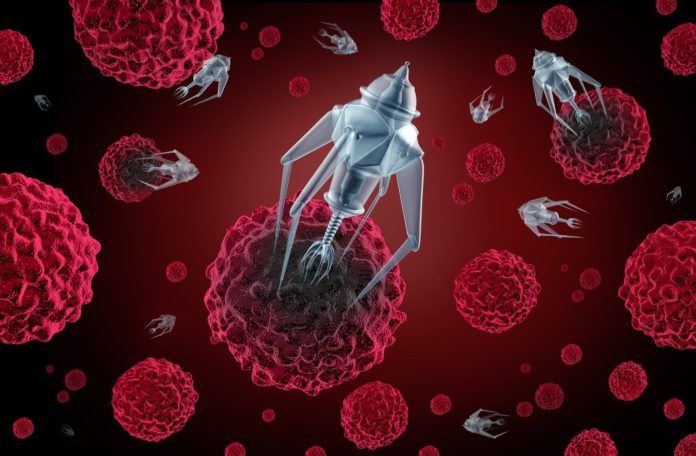• Physics from the Millennium Nucleus Physics of Active Matter has not only created three microrobots with different movements, but they just have created a “microrobot factory” to massively produce them.
• Smaller than a grain of salt, microrobots are devices that could be used in the future to carry medication to specific organs.
Know more about this investigation in this one-minute capsule (with subtitles in English):
During the last years, scientists all over the world have been looking for and investigating different ways to design and produce miniature robots. The reason? It is hoped that in the future these devices, smaller than a grain of salt, could be able to accomplish different tasks like crop pollination, generate actions in new tiny devices and get into the human body to clean blocked arteries or deliver medication in specific locations in the body. It seems like science fiction, but it is not, it is cutting-edge science, made in Chile.
Rodrigo Soto, Director of the Millennium Nucleus Physics of Active Matter and Professor of the University of Chile at the Physics Department, heads up a team that has become a pioneer in the design of microrobots. To date, they have created three different microrobot models, besides the design of a “microrobot factory” to produce them at large-scale. This work that was published in the New Journal of Physics magazine.
“So far, one of the difficulties creating microrobots is that every particle in its composition must be assembled one at a time. This investigation leads us to create something like a “microrobots factory” that allows particles to get through channels, assembling themselves and creating the desired device in terms of size and quantity. Certainly, this is a great advance and we are hoping to do the same with any other particle”, Dr. Soto said.
Pioneer work
In 2004 the first microrobot was created in the United States, it was a tiny bar, smaller than salt grain, that has two sides; one made of platinum and another made of gold. In contact with hydrogen peroxide, it moved like if it has a motor.
Ten years later, Rodrigo Soto, Director of the Millennium Nucleus Physics of Active Matter and Professor of the University of Chile at the Physics Department and Ramin Golestanian from Oxford University discovered the reason why a microrobot was able to move and also, they created a larger and more complex one, using the same compounds.
“We discovered that gold and platinum were attracted to each other, but gold made it more intensively than platinum. That is why gold moved faster towards platinum, got assembled to it and continued to push on its direction. That explained why it moved by itself. We noticed that if we put several gold and platinum particles into hydrogen peroxide, these started to get attracted and assembled creating a larger and more complex microrobot able to move formed by several golds and platinum particles”, explained Soto.
After the first investigation and based on physics principles, Soto started to design through computational simulations a microrobot able to vibrate. “After a while, Sebastián González and I wondered what would happen if we tied up one of the microrobot ends? Once it was done, we achieve to create a robot with flagellum that moved like a sperm cell. Until then, some robots only moved in a straight line so we were able to demonstrate that we could also create microrobots with oscillatory movements able to carry a load, just like a sperm cell transport genetic information on its head to fertilize the egg or to blend ingredients or medications using the flagellum like a mini juicer”, explained Dr. Soto.
Future applications
Why do we need tiny little robots? Doctor Soto says that several applications are under medical investigation and look to introduce little robots into the bloodstream to give a focused cure to a medical condition like cancer, for example. Other possible applications are in the nanotechnology field as part of chips that move with an aim. “Moving parts for cellphones or computers that make some kind of oscillation, alternately throwing things from one place to another, for example”, Soto Says.
Nowadays there are hybrid solutions that include biological and artificial components in the microrobot field, a crucial reason to understand its systems’ physics, its properties, mechanisms or how they behave in diverse situations for its development.


